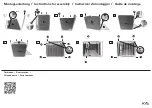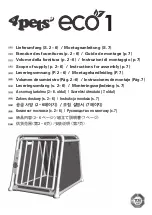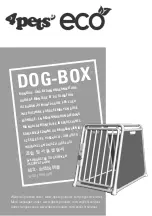
7 7
I N - S E R V I C E T E S T S
Purpose
The purpose of in-service tests is to regularly monitor and
record the performance of the thermostatic mixing valve.
Deterioration in performance can indicate the need for
service work on the valve and⁄ or the water supplies.
Procedure
1. Carry out the procedure 2. (a) to (e) on page 76
using
the same measuring equipment, or equipment to the same
specifications.
2. If the mixed water temperature has changed significantly from
the previous test results (e.g. > 1 K), record the change and
before re-adjusting the mixed water temperature check:
a) that any in-line or integral strainers are clean
b) any in-line or integral check valves or other anti-
backsiphonage devices are in good working order
c) any isolating valves are fully open
3. With an acceptable mixed water temperature, complete the
procedure 2. (a) to (e) on page 76.
4. If at step 2. (e) on page 76 the final mixed water temperature
is greater than the values in Table A and ⁄ or the maximum
temperature exceeds the corresponding value from the
previous test results by more than about 2 K, the need for
service work is indicated.
NOTE: In-service tests should be carried out with a frequency
which identifies a need for service work before an unsafe
water temperature can result. In the absence of any other
instruction or guidance, the procedure described in „Fre-
quency of in-service tests“ may be used.
F R E Q U E N C Y O F I N - S E R V I C E T E S T S
T M V 3 *
General
In the absence of any other instruction or guidance on
the means of determining the appropriate frequency of in-
service testing, the following procedure may be used:
1. 6 to 8 weeks after commissioning carry out the tests given
in 2. on page 76.
2. 12 to 15 weeks after commissioning carry out the tests given
in 2. on page 76.
3. Depending on the results of 1. and 4. several possibilities
exist:
a) If no significant changes (e.g. < 1 K) in mixed water
temperatures are recorded between commissioning
and 1., or between commissioning and 4. the next in-
service test can be deferred to 24 to 28 weeks after
commissioning.
b) If small changes (e.g. 1 to 2 K) in mixed water tempe-
ratures are recorded in only one of these periods, ne-
cessitating adjustment of the mixed water temperature,
then the next in-service test can be deferred to 24 to
28 weeks after commissioning.
c) If small changes (e.g. 1 to 2 K) in mixed water tempe-
ratures are recorded in both of these periods, necessi-
tating adjustment of the mixed water temperature, then
the next in-service test should be carried out at 18 to
21 weeks after commissioning.
d) If significant changes (e.g. > 2 K) in mixed water
temperatures are recorded in either of these periods,
necessitating service work, then the next in-service test
should be carried out at 18 to 21 weeks after commis-
sioning.
4. The general principle to be observed after the first 2 or 3 in-
service tests is that the intervals of future tests should be set to
those which previous tests have shown can be achieved with
no more than a small change in mixed water temperature.
*TMV2: The frequency of performing the in-service tests is 1
year maximum.
Summary of Contents for Carlton 17705 Series
Page 25: ...2 5 79 64 65 68 ZH A 42 C 65 C 180 180 68...
Page 27: ...2 7 79 64 65 68 c RU A 42 65 180 68...
Page 43: ...4 3 79 64 65 68 EL A 42 C 65 C 180 180 68...
Page 55: ...5 5 79 64 65 68 c BG A 42 C 65 C 180 180 68...
Page 58: ...5 8 AR 79 64 65 68 A 42 65 180 180 68...
Page 60: ...6 0 X 11 1 2 mm 1 1 2 2 4 3 5 6 2 2 3 1 1 SW 4 mm 5 Nm X 01700180 1 2 mm...
Page 64: ...6 4 40 C 7 8a 8b SW 2 mm 4 Nm SW 2 mm 4 Nm 1 2...




































